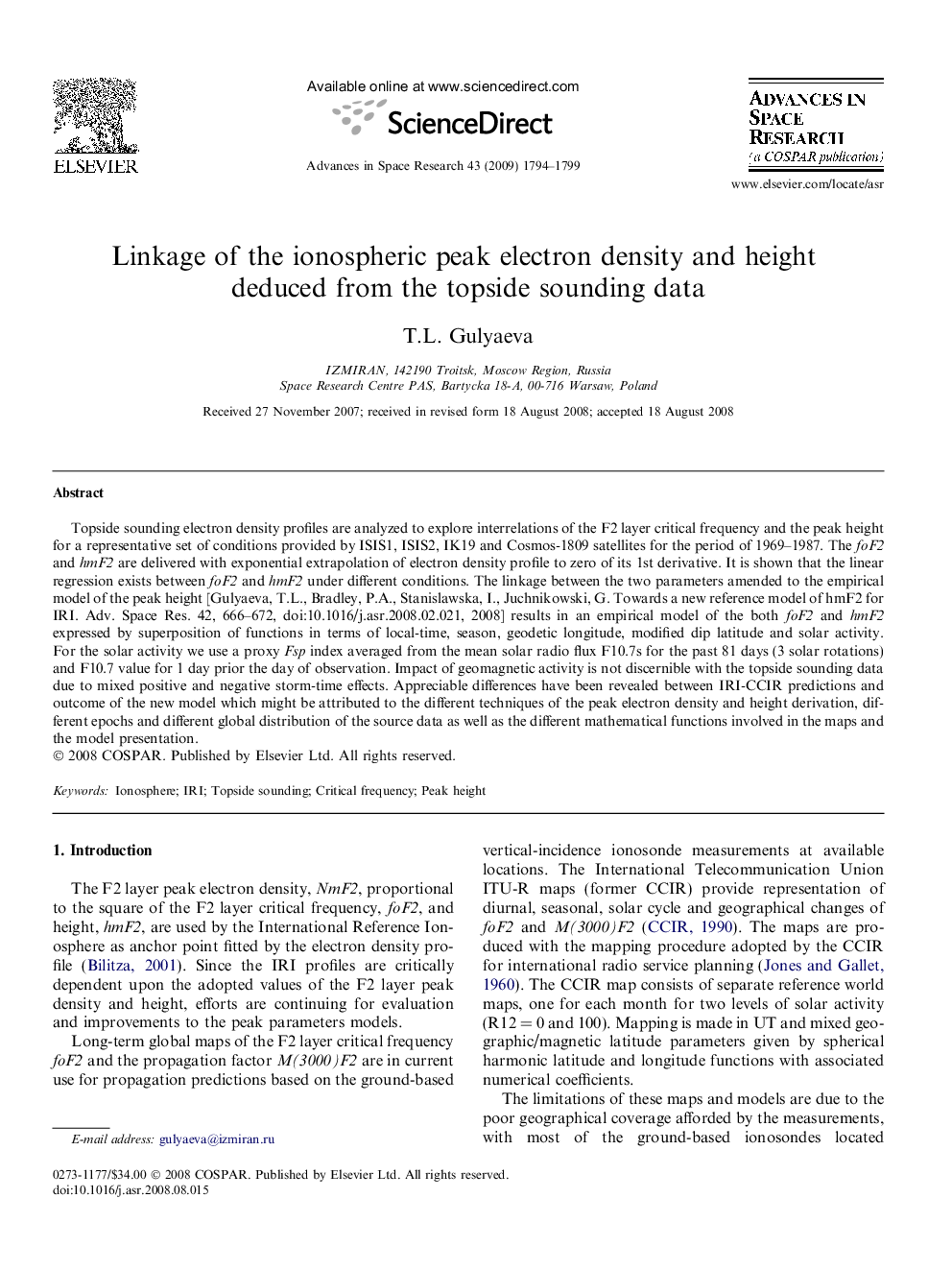| Article ID | Journal | Published Year | Pages | File Type |
|---|---|---|---|---|
| 1768222 | Advances in Space Research | 2009 | 6 Pages |
Topside sounding electron density profiles are analyzed to explore interrelations of the F2 layer critical frequency and the peak height for a representative set of conditions provided by ISIS1, ISIS2, IK19 and Cosmos-1809 satellites for the period of 1969–1987. The foF2 and hmF2 are delivered with exponential extrapolation of electron density profile to zero of its 1st derivative. It is shown that the linear regression exists between foF2 and hmF2 under different conditions. The linkage between the two parameters amended to the empirical model of the peak height [Gulyaeva, T.L., Bradley, P.A., Stanislawska, I., Juchnikowski, G. Towards a new reference model of hmF2 for IRI. Adv. Space Res. 42, 666–672, doi:10.1016/j.asr.2008.02.021, 2008] results in an empirical model of the both foF2 and hmF2 expressed by superposition of functions in terms of local-time, season, geodetic longitude, modified dip latitude and solar activity. For the solar activity we use a proxy Fsp index averaged from the mean solar radio flux F10.7s for the past 81 days (3 solar rotations) and F10.7 value for 1 day prior the day of observation. Impact of geomagnetic activity is not discernible with the topside sounding data due to mixed positive and negative storm-time effects. Appreciable differences have been revealed between IRI-CCIR predictions and outcome of the new model which might be attributed to the different techniques of the peak electron density and height derivation, different epochs and different global distribution of the source data as well as the different mathematical functions involved in the maps and the model presentation.
